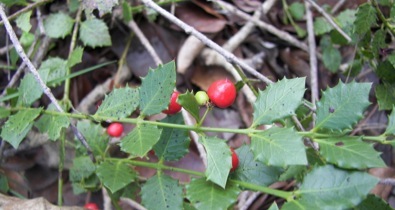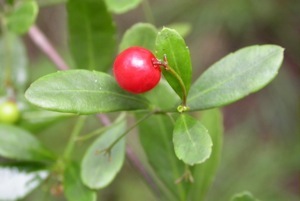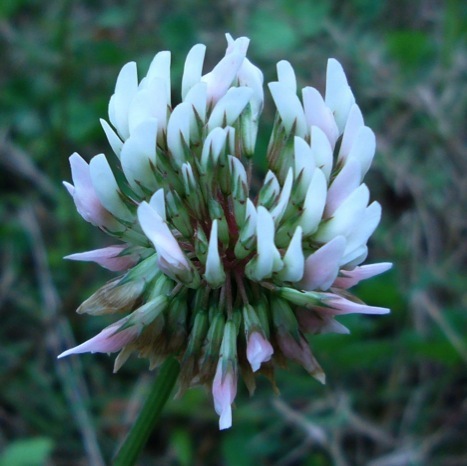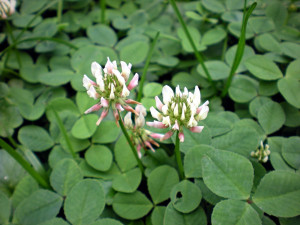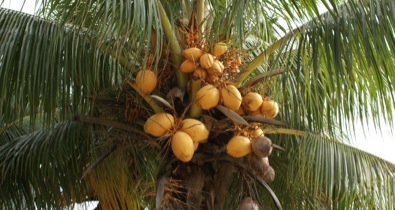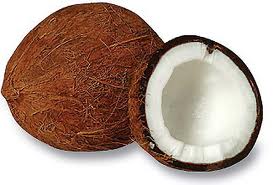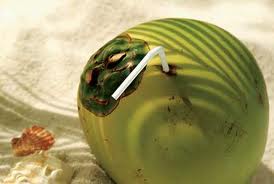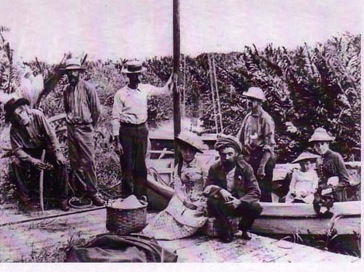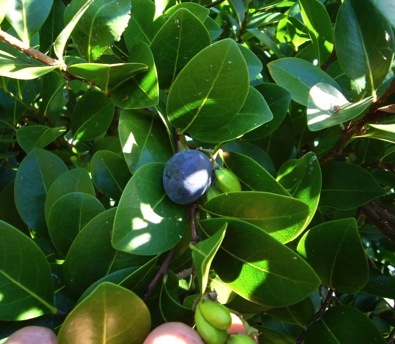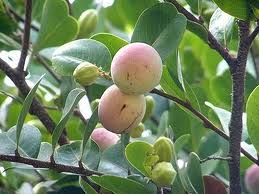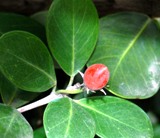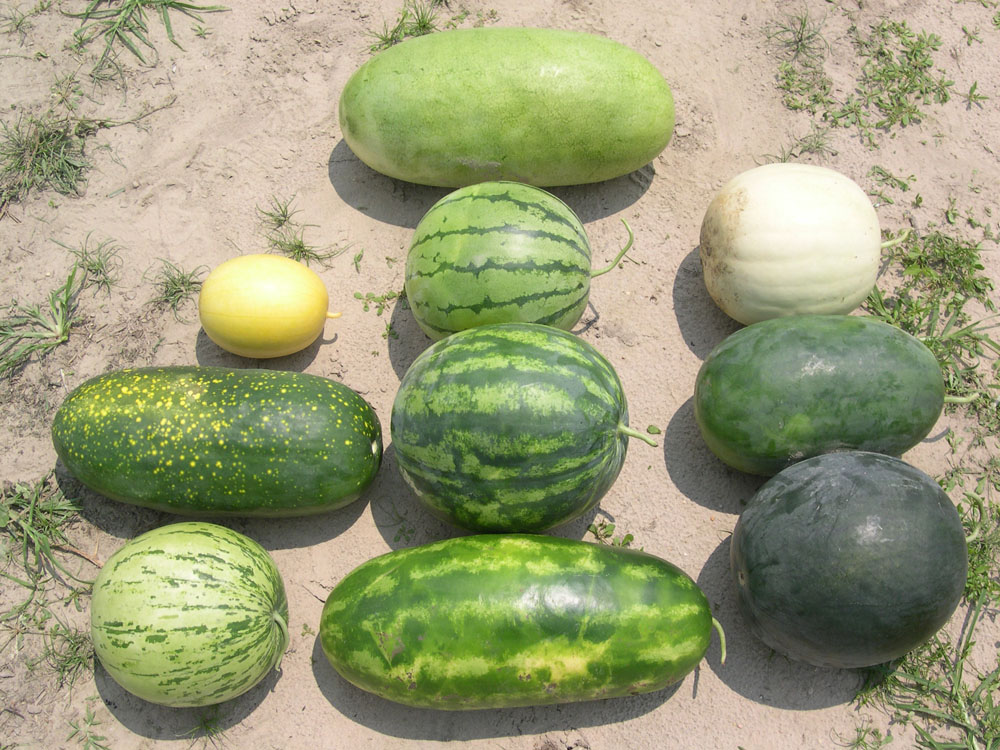
Wild Watermelons, photo University of Wisconsin.
Citron Melons: Abandoned Preserves
Are they edible?
Even people who do not forage want to know if the little watermelons they see in citrus groves are edible. The short answer is no. The longer answer is yes. What does that all mean? Well, that will take some explanation.
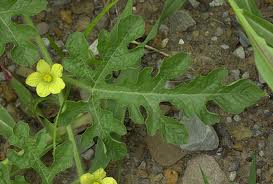
Tsamma melons (Citrullus ecirrhosus).
Usually non-bitter citron melons are used for preserves and are viewed by well-fed people as inedible raw. They are full of pectin so they are cooked up and used as jam and glaze and other sweet things. That said, in Africa, where folks are often not well-fed, melons are edible raw if they are not bitter. The tough pulp is pounded, the juice drank and the pulp eaten raw or cooked, preferably cooked.
So, if not bitter here in the American South it is viewed as something to be cooked for preserves and not edible raw. In dry, starving Africa if it is not bitter it is edible raw and cooked. What if it is bitter? If you have plenty of fuel and there is a famine you might be able to boil bitter melons in several changes of water and make them and their seeds edible. Starving people in Africa do that. The Beduins throw the entire melon onto the fire and cook it until it is totally dry. Then they grind it, make a paste out of it and smear it on a cloth, which they let dry. They don’t eat it but it will take a spark to light a fire.
By all rights, the bitter and the non-bitter ones should be two different species, Citrullus colocynthis and Citrullus lanatus var. citroides. But between the arguing of egotistical botanists, the multitude of names, and hybridizing, what a citrus grove watermelon is, is anyone’s guess. Let your taste guide you. Bitter bad, non-bitter useable at least in part.
Citrullus lanatus var. citroides is native to the Kalhari Desert in southwest Africa, so is the Citrullus colocynthis. Citrullus lanatus been in use for thousands of years and in cultivation for at least 4,000 years. Called Tsamma it its native range it is believed to be the ancestor of our common garden watermelon, Citrullus lanatus. We know watermelons were grown in the Nile Valley by 2000 BC, in India by 800 AD, China in 1100 AD. They were in Cordoba by 961 AD and Seville in 1158 AD. They came to the New World with the Spanish in the 1500s or so. Now the fruit is naturalized from North Carolina to California. Locally it is seen in current, old and built-over citrus groves. In fact, in several places where there are hundreds of acres of now freeze-dead citrus trees, the citron melon is still surviving.
Also called the “pie melon” the edibility of the melon varies greatly because it hybridizes with cultivated watermelons. While it always smells like a watermelon the white pulp is often too bitter to eat but can also be fine to eat. I have found some quite edible in the field with no cooking needed at all. Generally said, the smaller it is the more likely it is to be bitter. “Round” tends to be wild, “oblong” showing some cultivated genes. Also don’t confuse the Citron Melon with the Seminole Pumpkin, Cucurbita moschata, which is found in old Indian campsites. Those are quite edible. What do those look like? Like a squash or a pumpkin you would grow in your garden or buy in the supermarket.
There is, as one might expect, a lot of botanical fog with the citron melon. You will often read the flesh is inedible but the rind is, or all of it is edible, or all of it is inedible. That can be for different reasons. Some times it is bitter and not edible, other times it is just tough and can be pounded up and made edible if it is not bitter. Some call these fruits Citrullus lanatus var citroides, others Citrullus colocynthis. Some want to call it Citrullus colocynthis var citroides. The Citroides is considered to be in between the primitive bitter watermelon — colocynthis — and the cultivated sweet watermelon — lanatus. Regardless, if bitter leave it alone, though it can have medicinal applications.
Beside eating or preserving the non-bitter flesh, the seeds are edible as well. They can be dried or roasted or ground into a paste and made into a meal with many applications. The leaves and flowers can be cooked and eaten as a vegetable. Citron melon leaves are palmate in the early stages of growth, and deeply lobed in later. They have a rough texture and visible white veins. It has solitary flowers with large with yellow petals. Tendrils are to the side of the leaves. The seeds are greenish with a pitted surface, and leaning towards being a C. colocynthis. However, depending upon its heritage the seeds can also fall into two other groups, “wléwlé” which has glossy seeds with a tapered end or “bebu” which are flat and oval with rugged and thick ends. Harvest fruit when the vine starts to die back.
The next question is why are these things found in citrus groves? The answer is the grove is abandoned or not well care for. Essentially, the citron melon came first as a cultivated crop, citrus fruit came second. From a melon’s point of view a grove is a great place to escape too… food, water, sun and other weeds kept out. But, the melon is host to a bug that bugs citrus and a kept grove does its best to get rid of the opportunist melon. Where I personally see them a lot is in a pasture of well-fed cattle and horses. That tells me the citron melon there are either bitter or the livestock too well fed to eat them as large mammals do in Africa. Very few people raise the citron melon now so it is naturalized from centuries past, a reminder of when most folks still grew most of their food. More so, the melon was a the prime source of pectic to make jelly out of the low pectin fruit, such as oranges.
Citrullus (SIT-rhull-us) is the diminutive of the Greek word citrus and means little citron. The Latin species name lanatus (lan-NAY-tus) means wooly and calls attention to the hairs on the stems and leaves. Colocynthis (kol-OH-sinth-iss) if from the Greek word kolokunthis (round gourd, such as a pumpkin)
Lastly, let’s dispense with the idea that you will confuse a soccer ball sized watermelon fruit on the ground with a small citrus fruit in a tree, both called citron. I have no idea why internet sites think you will ever get those two mixed up.
Recipes
Take some fine citron melons; pare, core, and cut them into long broad slices. Weigh them, and to every six pounds of melon allow six pounds of fine loaf-sugar; and the juice and yellow rind (pared off very thin) of four lemons; also, half a pound of race (root) ginger. Put the slices of melon into a preserving-kettle; cover them with strong alum water, and boil them half an hour, or longer, till they are quite clear and tender. Then drain them, lay them in a broad vessel of cold water, cover them and let them stand all night. Next morning, tie up the race ginger in a piece of thin muslin, and boil it in three pints of clear spring or pump water, till the water is highly flavored. Having broken up the sugar, put it into a clean preserving-kettle, and pour the ginger water over it. When the sugar is all melted, set it over the fire, add the lemon parings, and boil and skim it, till no more scum rises. Then take out the lemon peel, stir in the juice, and put in the citron slices. Boil them in the syrup till they are transparent and soft, but not till they break. When done, put the citron slices and syrup into a large tureen, set it in a dry, cool, dark place, and leave it uncovered for two or three days. Then put the slices carefully into wide-mouthed glass jars, and gently pour in the syrup. Lay inside the top of each jar a double white tissue paper cut exactly to fit, and close the jars carefully with corks and seal.
Preserved Citron
Pare off the outer skin, cut into halves, remove the seeds, then divide each half into a number of smaller pieces. Put them in a stone jar, add a half-cup of salt to every five pounds of citron. Cover with cold water, and stand aside for five hours ; then drain, and cover with fresh, cold water. Soak two hours, changing the water three or four times. Dissolve a teaspoonful of powdered alum in two quarts of boiling water, add the citron, and bring to boiling point. Drain. Make a syrup from two and a half pounds of granulated sugar and one and a half quarts of boiling water, boil and skim. When perfectly clear, put in the citron and simmer gently until you can pierce it with a straw. When tender, lift the pieces carefully with a skimmer, place them on a large plate, and stand in the sun one or two hours to harden. Peel the yellow rind from one large lemon, add it to the syrup, then add the juice of two lemons, and a small piece of green ginger-root cut in thin slices. Boil gently for ten minutes, and stand aside until wanted. When the citron has hardened, put it cold into the jars, bring the syrup again to a boil, and strain it over the citron. Watermelon rind and pumpkin may be preserved in the same manner.
Citron Preserves
Citron melons (about 5 pounds), 5 pounds of sugar, lemons.
Cut the citron in slices, peeling outer skin. Remove all visible seeds. Add sugar pound for pound to the citron. Cover and put in cold place overnight. The next morning bring the mixture to a slow boil. Add sliced lemons according to taste. Cook several hours until it becomes thick, clear and yellow. The longer it is cooked, the thicker and darker it will become. Therefore, if one prefers it thick and dark, rather than liquid and light yellow, it should be cooked for a longer period of time. Place in a stone crock or in sterile jars and stores in a cool place. This recipe keeps very well in storage. We still have several jars in our basement which are several years old. This recipe is excellent when used as a replacement for maple syrup on pancakes, waffles and the like.
Citron
11 lbs. of citron, 7 lbs. of sugar, peel and remove seeds. Cut up citron and sprinkle with sugar. Add 1 lemon, a stick of margarine, simmer until clear, then bring to a boil. Allow citron to stand over cinnamon and a dozen cloves. Pour into jars and cover.
Watermelon or Citron Preserves
* 10 lbs. melon rind
* 10 lbs. sugar
* 1 cup cinnamon bark
* 1/4 lb. ginger root
* 1/2 oz. alum
* 1/2 cup salt
* 7 quarts water
Instructions
1. Peel melon rind, cutting off green and pink, and cut in any shape desired.
2. Put rind into 1 gallon water, adding salt and alum and let stand until brittle.
3. Drain and put in vessel with enough water to cover.
4. Add ginger and cook until tender.
5. Make syrup of sugar water and cinnamon.
6. Drain the rind and add to the syrup with ginger.
7. Cook until syrup is thick, from 30-60 minutes.
8. Put in jars, let cool, cover with paraffin and seal.
Citron melon preserves:
3 quarts prepared citron melon
8 cups sugar, divided
2 quarts water
1 cup thinly sliced, seeded lemon
Cut the melon in half and remove meat and seeds. Then cut the rind in ¾ inch slices, removing the peel and discarding it. Cut the rind into 1-inch pieces. Remove the seeds from the meat and cut into about 1-inch pieces. Add 4 cups sugar to water and bring to a boil. Add citron chunks and cook rapidly until tender. Cover and let stand overnight.
The next day, add remaining sugar and lemon to mixture. Boil gently until melon is transparent and syrup is thickened. Stir frequently to avoid scorching. Remove from heat. Skim foam if desired. Ladle hot preserves into hot jars, leaving ¼ inch of headroom. Wipe jar rims clean and place hot, previously-simmered lid on jar and tighten ring down firmly. Process for 15 minutes in a boiling water bath canner. If syrup becomes too thick, add a bit of boiling water; if it is too thin and the citron is cooked and tender, remove the citron and continue boiling syrup until thick, then re-add citron.
Green Deane’s “Itemized” Plant Profile
IDENTIFICATION: Looks like a round watermelon with jagged stripes, up to soccer ball size. Young leaves palmate, older leaves deeply lobed, rough texture, visible white veins, solitary flowers with large with yellow petals. Tendrils are to the side of the leaves. Seeds greenish, pitted surface, or glossy with tapered end or flat and oval.
TIME OF YEAR: Harvest fruit when the vine starts to die back.
ENVIRONMENT: Old groves, unattended margins of current groves, pastures, fields.
METHOD OF PREPARATION: If not bitter, rind and flesh for preserving, if not bitter pulp can be pounded and eaten, raw or cooked, preferably cooked. If bitter, leave alone. Young leaves if not bitter can be boiled like a green, the flowers, if not bitter, are edible cooked with pistils removed.

